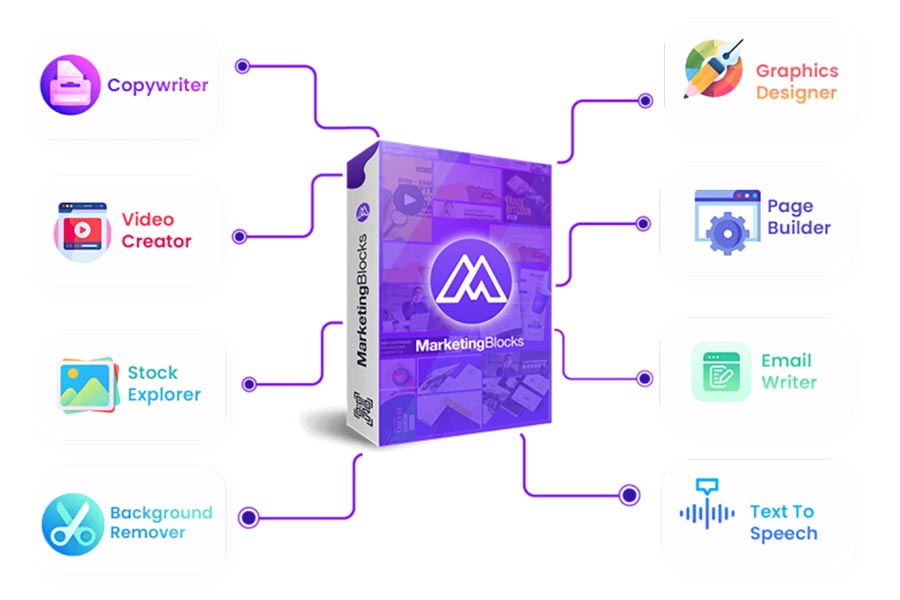Unleashing Creativity: Innovative Advertising Ideas

Introduction
Creative advertising is a form of advertising that focuses on creating unique and memorable experiences for the target audience. It is not just about promoting a product or service but also about engaging and capturing the audience’s attention in a way that stands out from the competition.
Consumers are bombarded with advertisements from various brands daily in today’s market. This makes it crucial for brands to stand out and make an impact through their advertising campaigns. Incorporating creativity in advertising enables brands to stand out and create a memorable impact on their desired audience. This, in turn, fosters brand recognition and loyalty, resulting in enhanced sales and customer interaction.
“Social media advertising is growing. Global social media ad spend is expected to reach $101.37 billion in 2021.”
— Statista
This blog aims to provide insights and inspiration for brands looking to create effective and creative advertising campaigns. It will cover the most successful and innovative advertising strategies, best practices and future trends in the field. The aim is to help brands develop creative advertising ideas that will capture the attention of their target audience and help them achieve their marketing goals.
Traditional Advertising Methods
Print Ads
Print advertising refers to using newspapers, magazines, brochures, flyers, and other printed materials to promote a product or service. This form of advertising has been around for centuries and is still widely used today. It is a cost-effective way to reach a large audience, primarily through regional or local publications.
Radio Ads
Radio advertising involves creating short, memorable commercials on the radio to reach a local or regional audience. This form of advertising is particularly effective for reaching people on the go, such as commuters or travellers. Radio advertising can be a cost-effective way to get a targeted audience, but other forms of advertising may be less memorable and impactful.
Television Ads
Television advertising involves creating commercials broadcast on television to reach a large, broad audience. This form of advertising can be highly effective due to the visual and audio elements. Still, it can also be expensive and may need to reach the desired target audience more effectively.
“70% of consumers say that they prefer to learn about products through content, rather than traditional advertising methods”
— Interactive Advertising Bureau
Billboards
Billboards are giant, physical advertisements displayed on buildings, highways, or other busy areas. This form of advertising can reach many people and is often used for promoting local businesses or events. However, many people can also ignore billboards, and their impact may be limited if the audience is not in the correct location or mindset.
Limitations of traditional advertising methods
Despite their popularity and effectiveness, traditional advertising methods have some limitations. For example, they may not effectively reach the desired target audience, may not be memorable, and can be costly. Additionally, traditional advertising methods may not provide the level of engagement or interactivity possible with other forms of advertising. Therefore, brands must consider these limitations when deciding which advertising methods to use and how to create effective campaigns.
Out of the Box Advertising Ideas
Influencer Marketing
Influencer marketing involves partnering with individuals with a large and engaged following on social media or other platforms. Influencers promote a brand’s products or services to their followers, leveraging their brand to reach a large, targeted audience. This form of advertising can be highly effective, as it takes advantage of the trust and influence that influencers have built with their followers.
“Influencer marketing is on the rise. Influencer marketing is set to become a $10 billion industry by 2020.”
— Business Insider
Content Marketing
The essence of content marketing lies in producing and distributing meaningful, pertinent, and consistent material to draw and maintain a specific audience. This mode of advertising encompasses a wide range of formats, such as blog posts, ebooks, webinars, infographics, and more. Content marketing is frequently employed to enhance brand recognition, demonstrate expertise, and encourage customer interaction.
Video Marketing
Video marketing involves creating and sharing content to promote a brand’s products or services. This form of advertising can be highly effective, as videos are engaging and can convey complex information quickly and effectively. Video marketing encompasses a variety of formats, including animated explainer videos, customer testimonials, product demonstrations, and more.
“84% of people say that they have been convinced to buy a product or service after watching a brand’s video”
— Wyzowl
Event Marketing
Event marketing involves creating or participating in events to promote a brand’s products or services. This form of advertising can take many forms, including trade shows, product launches, sponsor events, etc. Event marketing can be highly effective, allowing brands to interact directly with customers and build lasting relationships.
Interactive Marketing
Interactive marketing involves creating advertising experiences that engage customers meaningfully with a brand. This advertising can take many forms, including games, quizzes, and augmented reality experiences. Interactive marketing is often used to build brand awareness and drive customer engagement.
Social Media Advertising
Social media advertising involves creating and sharing ads on social media platforms to reach a large, targeted audience. This form of advertising can be highly effective, as social media platforms offer rich data and targeting capabilities and high engagement rates. Brands can create social media ads, including sponsored posts, sponsored stories, and promoted tweets.
“Visual content is 40 times more likely to be shared on social media than other types of content”
— Hubspot
Experiential Marketing
Experiential marketing involves creating real-world experiences to promote a brand’s products or services. This advertising can take many forms, including product demonstrations, pop-up shops, brand activations, etc. Experiential marketing is often used to build brand awareness, drive customer engagement, and create a lasting impression.
Future of Creative Advertising
Artificial Intelligence and Automation
Artificial intelligence and automation are increasingly important in the future of creative advertising. AI-powered tools can automate many aspects of the advertising process, from audience targeting and ad creation to measurement and optimization. This can help brands to save time, improve the efficiency of their advertising efforts, and create more effective campaigns.
Personalized Advertising
Personalized advertising involves delivering customized, relevant ads to customers based on their interests, behaviours, and other data points. This form of advertising can be highly effective, as it is tailored to the individual and can drive higher engagement and conversions. In addition, AI and machine learning advances are making it increasingly possible to deliver personalized advertising at scale.
“Personalised advertising can drive up to a 20% increase in sales”
— Google
Virtual Reality and Augmented Reality
Virtual Reality (VR) and Augmented Reality (AR) offer unique opportunities to create engaging and interactive advertising experiences that allow consumers to connect with a brand more deeply. Although this technology is still in its infancy, it holds the potential to revolutionize the advertising industry.
Increased Use of Chatbots
Chatbots are automated communication systems designed to offer customized advertising experiences to customers. These chatbots can be integrated into websites, mobile applications, and other platforms and serve functions such as providing product suggestions, answering queries, and more. Chatbots’ growing popularity is crucial in delivering creative and personalized advertising experiences that engage consumers.
“80% of businesses plan to adopt chatbots by 2020”
— Oracle
Conclusion
Throughout this article, we’ve explored the importance of creative advertising in today’s market. By being creative and innovative, brands can stand out from their competitors and engage customers in new and meaningful ways. In addition, creative advertising can drive results and build solid and lasting relationships with customers through influencer, content, video, event, interactive, social media, or experiential marketing.
In addition to highlighting the importance of creative advertising, this article has also explored some of the best practices and future trends in the field. From artificial intelligence and automation to virtual and augmented reality to personalized advertising and the increased use of chatbots, the future of creative advertising is bright and full of exciting possibilities.
As we wrap up this article, it’s clear that creative advertising is an essential part of any successful marketing strategy. For both experienced marketers and beginners alike, it’s essential to continually experiment, embrace new ideas, and challenge the limits of what can be achieved. Remember, the most successful campaigns often come from brands willing to take risks and think outside the box.
Finally, we encourage you to keep experimenting and being creative in your advertising efforts. Whether you’re using traditional methods or exploring new and innovative channels, the key is to stay true to your brand and keep pushing the boundaries of what’s possible. So go out there, be creative, and never stop experimenting – the endless possibilities!
Be sure to check out our other related posts if you enjoyed this one:
- Supercharge Your Business: Mastering Cross-Channel Marketing Magic!
- Influence: The Psychology of Persuasion by Robert B. Cialdini – A Word Marketing Book Summary
- Building Trust: Brand Awareness & Reputation
- Unlocking Success: Data-Driven Targeted Advertising
- The AI Revolution: Transforming Marketing & Advertising
- Introducing Our New and Improved Dewalist Marketplace Design
- Ad Ethics: Balancing Persuasion with Responsibility
- Email Showdown: Mandrill vs Mailchimp Features
- The Future of Digital Out-of-Home (DOOH) Advertising
- Revolutionising Marketing with Virtual & Augmented Reality
Sign up for updates on this blog and our latest marketing posts if you enjoyed reading this one.
Share our blog content with your friends and colleagues via Facebook, Twitter, Pinterest, LinkedIn, email or WhatsApp links below and help them stay informed about the latest insights on business, marketing, finance, lifestyle, and society. Let’s build a knowledge-sharing community and empower each other to achieve our goals.
Credits
- Featured image by DilokaStudio on Freepik









